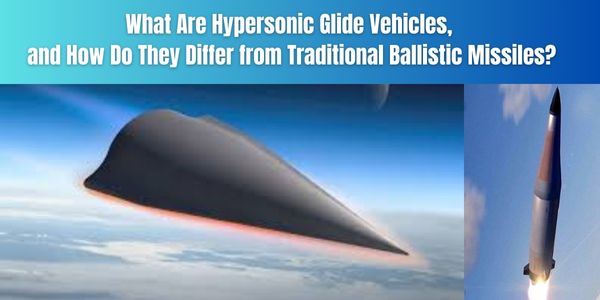Imagine a weapon that screams through the sky faster than a fighter jet, twisting and turning to outfox even the most advanced defenses. Enter hypersonic glide vehicles (HGVs)—a new breed of armament that fuses blistering speed with mid-flight acrobatics. They’re rewriting the rules of warfare, but what sets them apart from the ballistic missiles we’ve known for decades? Let’s break it down and explore their mechanics, differences, and why they’re shaking up the global stage.
What Is an HGV?
A hypersonic glide vehicle is a cutting-edge weapon that streaks through the atmosphere at speeds exceeding Mach 5—five times the speed of sound, or roughly 3,800 miles per hour (6,100 kilometers per hour). Unlike traditional missiles, HGVs don’t just fall to their target; they glide and maneuver with uncanny agility after being launched into the sky by a rocket booster. This combination of velocity and unpredictability makes them a nightmare for missile defense systems.
How HGVs Work
The journey of an HGV unfolds in two key phases:
- Launch Phase: A powerful rocket propels the HGV to the edge of space, much like a conventional ballistic missile. This initial boost is all about altitude and momentum.
- Glide Phase: Once it separates from the rocket, the HGV reenters the atmosphere and begins its hypersonic dance. Using aerodynamic lift, it glides at breakneck speeds while adjusting its trajectory mid-flight—dodging interceptors and homing in on its target.
How They Differ from Ballistic Missiles
While both HGVs and ballistic missiles can hit hypersonic speeds, their behavior and capabilities diverge sharply. Here’s a head-to-head comparison:
- Flight Path
- Ballistic Missiles: Follow a predictable, arching trajectory—like a ball thrown high into the air—ascending into space before plunging back to Earth.
- HGVs: Skim lower through the atmosphere, weaving a flexible, erratic path that defies easy tracking.
- Speed
- Ballistic Missiles: Reach hypersonic velocities during reentry but slow down as they descend through denser air.
- HGVs: Maintain Mach 5 or higher throughout their glide, delivering relentless speed from start to finish.
- Maneuverability
- Ballistic Missiles: Locked into a mostly fixed course after launch, with limited ability to adjust.
- HGVs: Twist, turn, and shift direction mid-flight, evading defenses like a bird of prey.
- Altitude
- Ballistic Missiles: Soar into the exosphere, often exceeding 1,000 kilometers (620 miles) at their peak.
- HGVs: Cruise between 40 and 100 kilometers (25–62 miles) above Earth, staying within the atmosphere’s upper reaches.
- Defense Vulnerability
- Ballistic Missiles: Fast and formidable, but their predictable arcs make them trackable by advanced radar systems.
- HGVs: Swift and elusive, their low-altitude maneuvers throw a wrench into current interception technologies.
Real-World Examples
HGVs aren’t just theoretical—they’re already taking shape:
- China’s DF-ZF: Paired with the DF-17 missile, this operational HGV can reportedly hit speeds up to Mach 10.
- Russia’s Avangard: A beast claimed to reach Mach 20, deployed atop intercontinental ballistic missiles (ICBMs).
- U.S. C-HGB: The Common-Hypersonic Glide Body, still in testing, aims to keep pace with global rivals.
MUST READ
How Have International Treaties Attempted to Limit Ballistic Missile Proliferation?
What Is the Difference Between a Ballistic Missile and a Cruise Missile?
Why HGVs Matter
HGVs are game-changers for three big reasons:
- Defense Evasion: Their speed and agility outmatch today’s missile shields, leaving defenders scrambling.
- Reaction Time: Traveling over a mile per second, they shrink decision windows to mere minutes—or less.
- Arms Race: Nations like the U.S., Russia, and China are pouring resources into HGV tech, fueling a high-stakes competition.
The Challenges
Building and deploying HGVs isn’t without hurdles:
- Thermal Stress: Flying at hypersonic speeds generates intense heat—up to 2,000°C (3,600°F)—demanding advanced materials that won’t melt or disintegrate.
- Cost: The cutting-edge engineering and testing required make HGVs a budget-busting endeavor.
Conclusion
Hypersonic glide vehicles marry the raw speed of ballistic missiles with the nimble precision of cruise missiles, creating a hybrid that’s as awe-inspiring as it is unsettling. They’re poised to redefine missile technology, challenging defenses and amplifying global tensions. As these weapons evolve, they remain both a marvel of innovation and a puzzle for strategists tasked with keeping the world secure.

